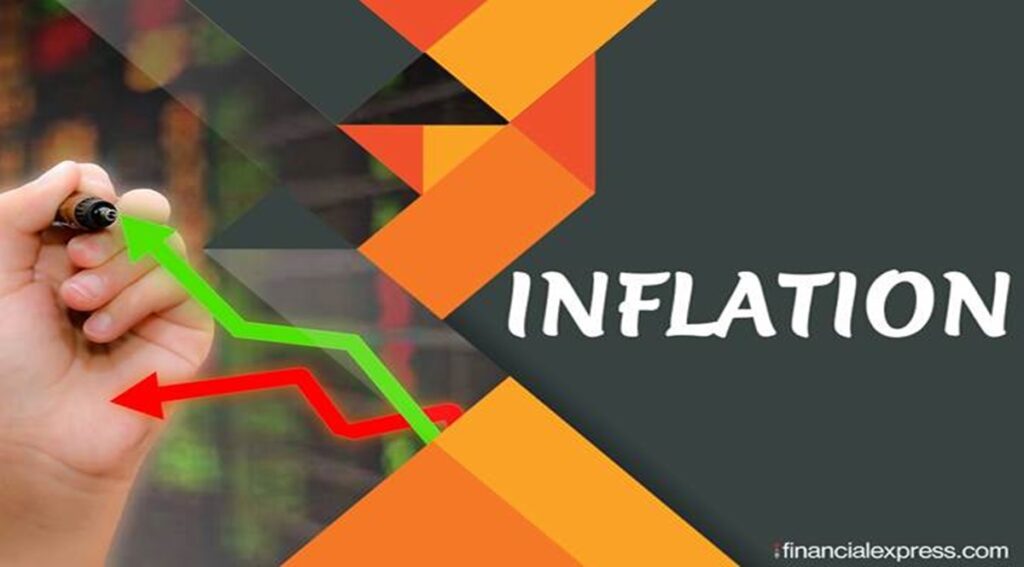By Shilpa Shree Venkatesh Soaring prices continue to cause a grave concern as economies are sustainably emerging from the recurring waves of the COVID-19 pandemic. In 2020 and early 2021, when the price pressures were building up due to demand-supply imbalances, inflation was largely viewed as “transitory”. However, in the existing scenario, inflation can no longer be considered transitory.
Evidently, central banks globally are increasing their policy rates at a faster pace than expected. However, the current drivers of inflation — the Ukraine-Russia war, EU sanctions, recurring lockdowns in China, extended supply chain bottlenecks, etc. — are well beyond the central bank’s control.
Thus, for 2022, the IMF has projected inflation at 5. 7 per cent for advanced economies and 8. 7 per cent for emerging economies, up 1.
8 and 2. 5 percentage points from its previous projections. In the context of India, inflation is predominantly supply-led due to the country’s dependency on imports.
Given the negative global spill-overs arising from geopolitical tensions, India’s inflation trajectory has been revised upwards. In June 2022 policy meeting, the RBI revised its inflation projection to 6. 7% for FY23, up 100bps, or 1 percentage point, from the previous policy meeting.
In India, the domestic price pressures in the near term are expected to build in all the key categories — fuel, food, and core (ex-food and fuel). Domestic fuel prices are more likely to remain volatile owing to soaring global energy prices. Although the central government has cut the excise duty on petrol and diesel recently, volatility in global crude prices will hinder any further softening of domestic fuel prices.
According to World Bank, energy prices are expected to rise by more than 50% in 2022 before levelling off in 2023–24. Brent crude oil prices are forecast to average at $100 per barrel in 2022. However, given the current high prices of US $122 per barrel, crude prices exceeding this estimate would not be surprising.
Food comprises 39% of the weight in the inflation basket. As a result, a change in food prices has a greater impact on headline consumer inflation. Currently, global food prices are being exacerbated by the Ukraine-Russia war, which is exerting issues such as supply disruption, hoarding, and food shortages.
As a result, the global food price index spiked 157. 3 points, up 23% YoY in May’22. Historically, the global food price index and India’s domestic food inflation have higher linkages.
Additionally, the domestic prices of agricultural inputs such as high-speed diesel, fertilizers, pesticides, animal feeds, etc. have been considerably rising. The transmission of rising input costs would further escalate food prices in India.
Owing to the aforementioned factors, in the food basket, along with the agricultural produce, the price rise is also likely to be witnessed in the edible oils, milk, and poultry categories. Inflation in core categories remained stable at around 6% for most of FY22, despite limited price transmission from producers to consumers due to weak demand. However, as global commodity prices are still elevated, the input costs have further hardened, shrinking the producer’s profit margin.
Thus, in the next few months, the transmission of input costs from the producers to the consumers is inevitable. Furthermore, in FY23, the overall consumption demand in the economy is expected to strengthen, supported by a normal monsoon and a revival in the service sector. This would add to inflationary pressure in the economy due to price rises led by a revival in domestic demand.
So far in FY23, consumer headline inflation has remained well above the RBI’s upper tolerance limit of 6% in April and May 2022. And, in the coming months, the domestic inflation outlook remains uncertain with risks emanating from prolonged external vulnerabilities. A continuous rise in domestic prices would stifle India’s economic recovery, impacting two key engines of growth – consumption and investment.
Price rise would reduce real wages, especially in rural areas, dampening consumption, which otherwise is expected to improve in the coming months. On the other hand, investments could get impacted by rising borrowing rates in the event of aggressive rate tightening by the RBI to bring inflation under control. In the last two months, the RBI has increased the repo rate by 90bps to 4.
9 per cent, emphasising on taming inflation. However, by shifting the policy gears, the central bank has limited control over existing supply-led inflation. It would be crucial to witness how India’s economy would unfurl in the next few months amidst rising interest rates and a growth-inflation dilemma.
ComponentAs on monthYoY ChangeCPIMay 20227%Core CPIMay 20226. 2%WPIMay 202216%Global commodity price index – EnergyMay 202286%Global commodity price index – Non-energyMay 202215%Global food price IndexMay 202223%Source: CMIE, Worldbank, FAO( (Shilpa Shree Venkatesh is the Lead Consultant, Knight Frank India. Views expressed are the author’s own.
).
From: financialexpress
URL: https://www.financialexpress.com/economy/inflation-may-remain-elevated-price-pressures-continue-to-build-in-food-fuel-and-core-segments/2560901/
